The automotive landscape continues to evolve rapidly, especially as we transition towards electric and hybrid technologies. Kia is at the forefront of this movement with its innovative models, the Kia EV3 and the Kia Niro, both vying for a place in the burgeoning electric SUV segment. In this comparison, we will delve into the technical aspects, innovations, and overall performance of these two vehicles.
Kia EV3 vs Kia Niro – Performance, range & efficiency compared
Compare performance, boot capacity, efficiency and price at a glance.
Find out which car is the better choice for you – Kia EV3 or Kia Niro?
Powertrain and Performance
Starting with the Kia EV3, this fully electric SUV boasts an impressive power output of 204 HP, thanks to its advanced electric engine. The EV3 achieves a remarkable acceleration from 0 to 100 km/h in as little as 7.5 seconds, showcasing its sporty character. In contrast, the Kia Niro offers a choice of two hybrid powertrains, delivering 129 HP in its standard hybrid version and up to 171 HP in its plug-in variant. The Niro's acceleration ranges from 10.4 to 11.3 seconds, making it less sprightly than its electric cousin.
Efficiency and Consumption
When it comes to efficiency, the EV3 shines with a consumption rate of 14.9 to 16.2 kWh/100 km, offering an impressive electric range of up to 605 km, particularly with the larger 81.4 kWh battery. This capacity allows drivers to enjoy extended trips without the anxiety of frequent recharging. The Niro, while not fully electric, still demonstrates commendable efficiency, offering fuel consumption figures as low as 4.4 L/100 km in its hybrid configuration and 0.8 L/100 km for the plug-in version, albeit with a limited electric range of only 65 km.
Dimensions and Practicality
In terms of size, the Kia EV3 measures approximately 4300 mm in length and 1850 mm in width, providing ample cabin space and a trunk capacity of 460 liters. Meanwhile, the Niro is slightly longer at 4420 mm and has a trunk capacity ranging from 348 to 451 liters, depending on the version. Both SUVs comfortably seat five passengers, ensuring family-friendly usability, though the EV3 offers a bit more modern flair with its design and spaciousness.
Innovative Technology
Both models are equipped with cutting-edge technology to enhance the driving experience. The Kia EV3 features an automatic transmission through a reduction gearbox, facilitating a smooth driving experience. Additionally, it comes equipped with various infotainment options, driving aids, and smart connectivity features that cater to the tech-savvy consumer.
The Kia Niro, while employing a traditional automatic dual-clutch transmission, does not fall short in technology. It offers an array of driver-assist features and an intuitive infotainment system, appealing to buyers looking for hybrid solutions. However, the EV3's focus on electric mobility aligns it more with the future of automotive technology.
Environmental Impact and CO2 Emissions
As environmental concerns continue to dictate purchasing decisions, the EV3 clearly stands out with zero CO2 emissions, earning it a top efficiency class rating. On the flip side, the Niro emits between 19 to 100 g/km depending on the configuration, reflecting the dual nature of its hybrid engines. Thus, while the Niro remains environmentally friendly, it does not match the EV3's zero-emissions advantage.
Conclusion: Which SUV Reigns Supreme?
In conclusion, selecting between the Kia EV3 and Kia Niro largely depends on consumer priorities. For those seeking a fully electric experience with impressive range, cutting-edge technology, and a sporty drive, the Kia EV3 is a formidable contender. However, for buyers keen on the benefits of hybrid technology and a more traditional driving experience, the Kia Niro remains a strong option with its efficient dual powertrain choices.
Ultimately, both models embody Kia's commitment to innovation and sustainability, making them excellent choices in today's competitive automotive market.
Here’s where it gets real: The technical differences in detail
Costs and Efficiency:
Price and efficiency are key factors when choosing a car – and this is often where the real differences emerge.
Kia Niro has a minimal advantage in terms of price – it starts at 29100 £, while the Kia EV3 costs 30800 £. That’s a price difference of around 1714 £.
As for range, the Kia EV3 performs decisively better – achieving up to 605 km, about 543 km more than the Kia Niro.
Engine and Performance:
Power, torque and acceleration are the classic benchmarks for car enthusiasts – and here, some clear differences start to show.
When it comes to engine power, the Kia EV3 has a slightly edge – offering 204 HP compared to 180 HP. That’s roughly 24 HP more horsepower.
In acceleration from 0 to 100 km/h, the Kia EV3 is clearly perceptible quicker – completing the sprint in 7.50 s, while the Kia Niro takes 9.90 s. That’s about 2.40 s faster.
In terms of top speed, the Kia Niro performs barely noticeable better – reaching 185 km/h, while the Kia EV3 tops out at 170 km/h. The difference is around 15 km/h.
There’s also a difference in torque: Kia EV3 pulls minimal stronger with 283 Nm compared to 265 Nm. That’s about 18 Nm difference.
Space and Everyday Use:
Whether family car or daily driver – which one offers more room, flexibility and comfort?
Both vehicles offer seating for 5 people.
In curb weight, Kia Niro is noticeable lighter – 1474 kg compared to 1800 kg. The difference is around 326 kg.
In terms of boot space, the Kia EV3 offers hardly perceptible more room – 460 L compared to 451 L. That’s a difference of about 9 L.
In maximum load capacity, the Kia Niro performs slightly better – up to 1445 L, which is about 194 L more than the Kia EV3.
When it comes to payload, Kia EV3 slight takes the win – 470 kg compared to 466 kg. That’s a difference of about 4 kg.
Who wins the race?
The Kia EV3 proves to be wins the duel decisively and therefore becomes our DriveDuel Champion!
Kia EV3 is the better all-rounder in this comparison.
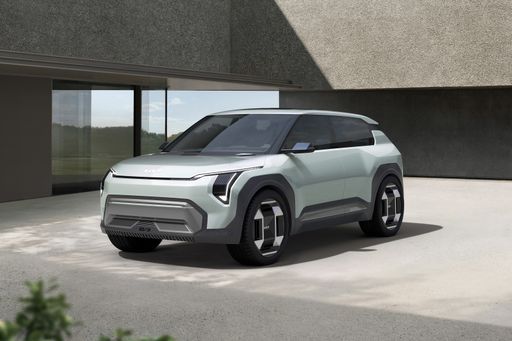 @ Kia Corporation
@ Kia Corporation
Kia EV3
Kia EV3
The Kia EV3 arrives as a cheeky, practical electric compact that manages to feel both premium and playful, delivering crisp handling and a roomy cabin that's perfect for urban life. With smart tech, friendly styling and sensible pricing, the EV3 is the kind of car that makes switching to electric feel like a no-brainer without asking you to give anything important up.
details @ Kia Corporation
@ Kia Corporation
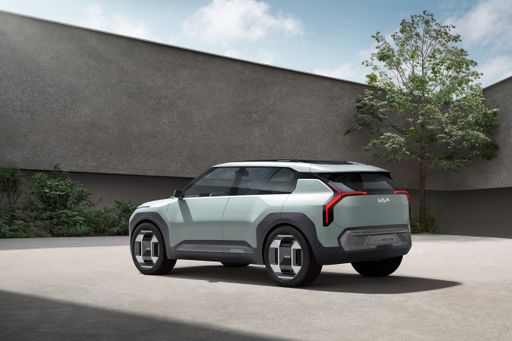 @ Kia Corporation
@ Kia Corporation
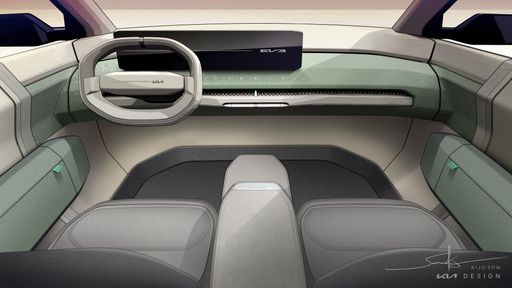 @ Kia Corporation
@ Kia Corporation
Kia Niro
The Kia Niro presents itself as a versatile and eco-friendly SUV, blending a stylish design with advanced hybrid technology. Its spacious interior offers comfort and practicality, making it ideal for both city driving and longer journeys. With a focus on efficiency and sustainability, the Niro is a compelling choice for environmentally conscious drivers.
details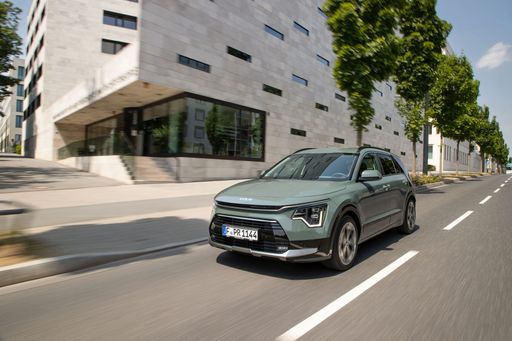 @ Kia Corporation
@ Kia Corporation
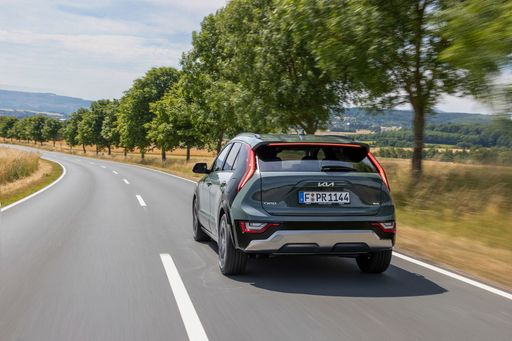 @ Kia Corporation
@ Kia Corporation
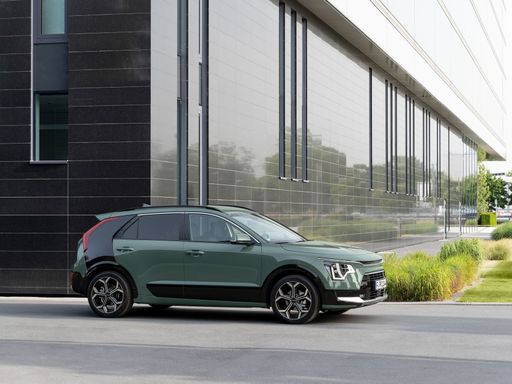 @ Kia Corporation
@ Kia Corporation
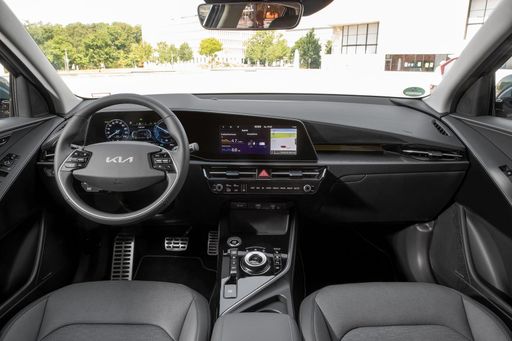 @ Kia Corporation
@ Kia Corporation
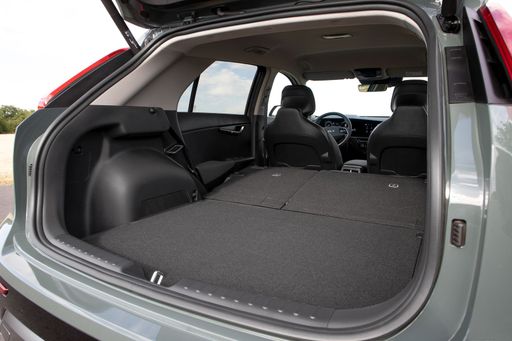 @ Kia Corporation
@ Kia Corporation
 @ Kia Corporation
@ Kia Corporation
|
 @ Kia Corporation
@ Kia Corporation
|
|
|
|
Costs and Consumption |
|
|---|---|
|
Price
30800 - 41700 £
|
Price
29100 - 38600 £
|
|
Consumption L/100km
-
|
Consumption L/100km
2.4 - 4.9 L
|
|
Consumption kWh/100km
14.9 - 16.2 kWh
|
Consumption kWh/100km
-
|
|
Electric Range
436 - 605 km
|
Electric Range
57 - 62 km
|
|
Battery Capacity
58.3 - 81.4 kWh
|
Battery Capacity
1.3 - 11.1 kWh
|
|
co2
0 g/km
|
co2
53 - 111 g/km
|
|
Fuel tank capacity
-
|
Fuel tank capacity
37 - 42 L
|
Dimensions and Body |
|
|---|---|
|
Body Type
SUV
|
Body Type
SUV
|
|
Seats
5
|
Seats
5
|
|
Doors
5
|
Doors
5
|
|
Curb weight
1800 - 1885 kg
|
Curb weight
1474 - 1594 kg
|
|
Trunk capacity
460 L
|
Trunk capacity
348 - 451 L
|
|
Length
4300 - 4310 mm
|
Length
4420 mm
|
|
Width
1850 mm
|
Width
1825 mm
|
|
Height
1560 - 1570 mm
|
Height
1545 mm
|
|
Max trunk capacity
1251 L
|
Max trunk capacity
1342 - 1445 L
|
|
Payload
470 kg
|
Payload
466 kg
|
Engine and Performance |
|
|---|---|
|
Engine Type
Electric
|
Engine Type
Full Hybrid, Plugin Hybrid
|
|
Transmission
Automatic
|
Transmission
Automatic
|
|
Transmission Detail
Reduction Gearbox
|
Transmission Detail
Dual-Clutch Automatic
|
|
Drive Type
Front-Wheel Drive
|
Drive Type
Front-Wheel Drive
|
|
Power HP
204 HP
|
Power HP
138 - 180 HP
|
|
Acceleration 0-100km/h
7.5 - 7.9 s
|
Acceleration 0-100km/h
9.9 - 11.4 s
|
|
Max Speed
170 km/h
|
Max Speed
170 - 185 km/h
|
|
Torque
283 Nm
|
Torque
265 Nm
|
|
Number of Cylinders
-
|
Number of Cylinders
4
|
|
Power kW
150 kW
|
Power kW
102 - 132 kW
|
|
Engine capacity
-
|
Engine capacity
1580 cm3
|
General |
|
|---|---|
|
Model Year
2024
|
Model Year
2025
|
|
CO2 Efficiency Class
A
|
CO2 Efficiency Class
C, B
|
|
Brand
Kia
|
Brand
Kia
|
What drive types are available for the Kia EV3?
The Kia EV3 is offered with Front-Wheel Drive.
The prices and data displayed are estimates based on German list prices and may vary by country. This information is not legally binding.
